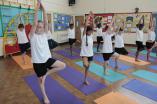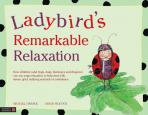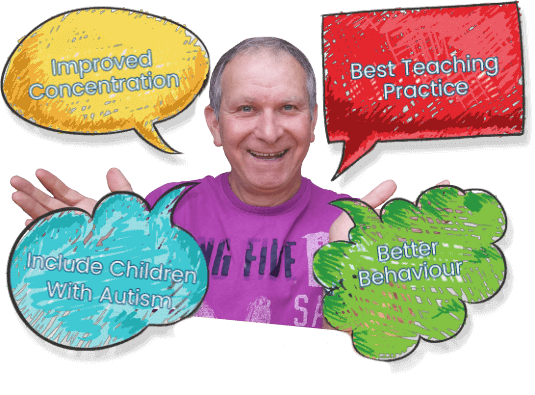Yoga as part of the school day knocks spots off of after schools clubs. Discuss

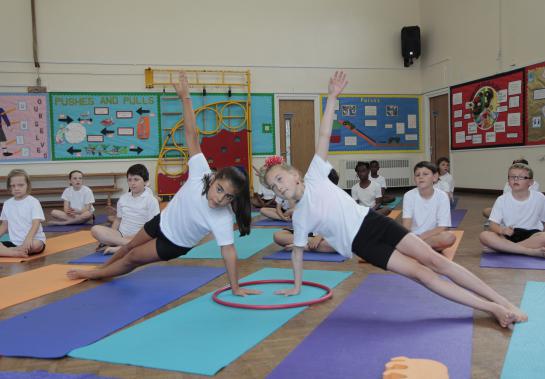
Introduction
1 am often asked why I believe that children benefit more from yoga taught as part of the school day, rather than at after school clubs. I always answer by making it clear that I am not against clubs; there are obvious benefits that after school clubs bring to the community and some yoga for children is better than none. For the record I started my career teaching yoga to children as an after school club activity, so I can be objective about both teaching approaches.
The heart of this debate centres around four main issues:
- Which approach is more conducive to children's learning?
- Which approach would be more likely to welcome and include a range of special needs children?
- Which approach provides a setting where yoga can be best integrated into the curriculum?
- Which approach will be most conducive to children's relaxation?
So lets explore each in turn
More conducive to children learning yoga?
An after school class would, as a rule, encompass several year groups. This is not necessarily a bad thing; combining different ages in activities can certainly help foster a sense of responsibility and community.
Children's Learning
However, in terms of the children's learning the wide disparity between the cognitive, emotional and physical development between year groups would make it impossible to satisfy the needs of the whole class at any one time; and for sure this would affect the classes behaviour.
Fitting In
Furthermore, the burdens of fitting in and retaining social credibility may prevent some children from joining a class with younger pupils; and conversely, younger children may feel intimidated by a class dominated by those from older year groups.
Adding to Class Teachers Strategies
Many activities that I teach encourage children to take control and responsibility for their behaviour. Class teachers and staff often pick up on these important elements and will incorporate or add them to their own
Generally teaching staff do not go into after school clubs and therefore can neither contribute their expertise nor take away skills or strategies
The Presence of the Class Teacher
While my yoga lessons are exciting and fun, they are, nonetheless, an educational part of the school day. The familiar presence of the class teacher and other members of staff help children quickly relax into the activities, well aware of the behaviour expected of them. Meanwhile the children feel at home in the company of their peers.
Yoga as part of established weekly routine
I find that the children are generally more receptive to instructions when yoga is an established part of their routine, rather than seeing the lesson as an extra-curricular activity and therefore an opportunity for disruptive behaviour.
Social Skills & Groupwork
There are lots of opportunities for group work in our yoga lessons, enabling the children to work on social skills and other elements of the PSHE Curriculum. Obviously this is easier to accomplish within a specific year group, where children are generally at the same level of emotional maturity, rather than an after school club with a wide range of ages.
More dynamic lessons 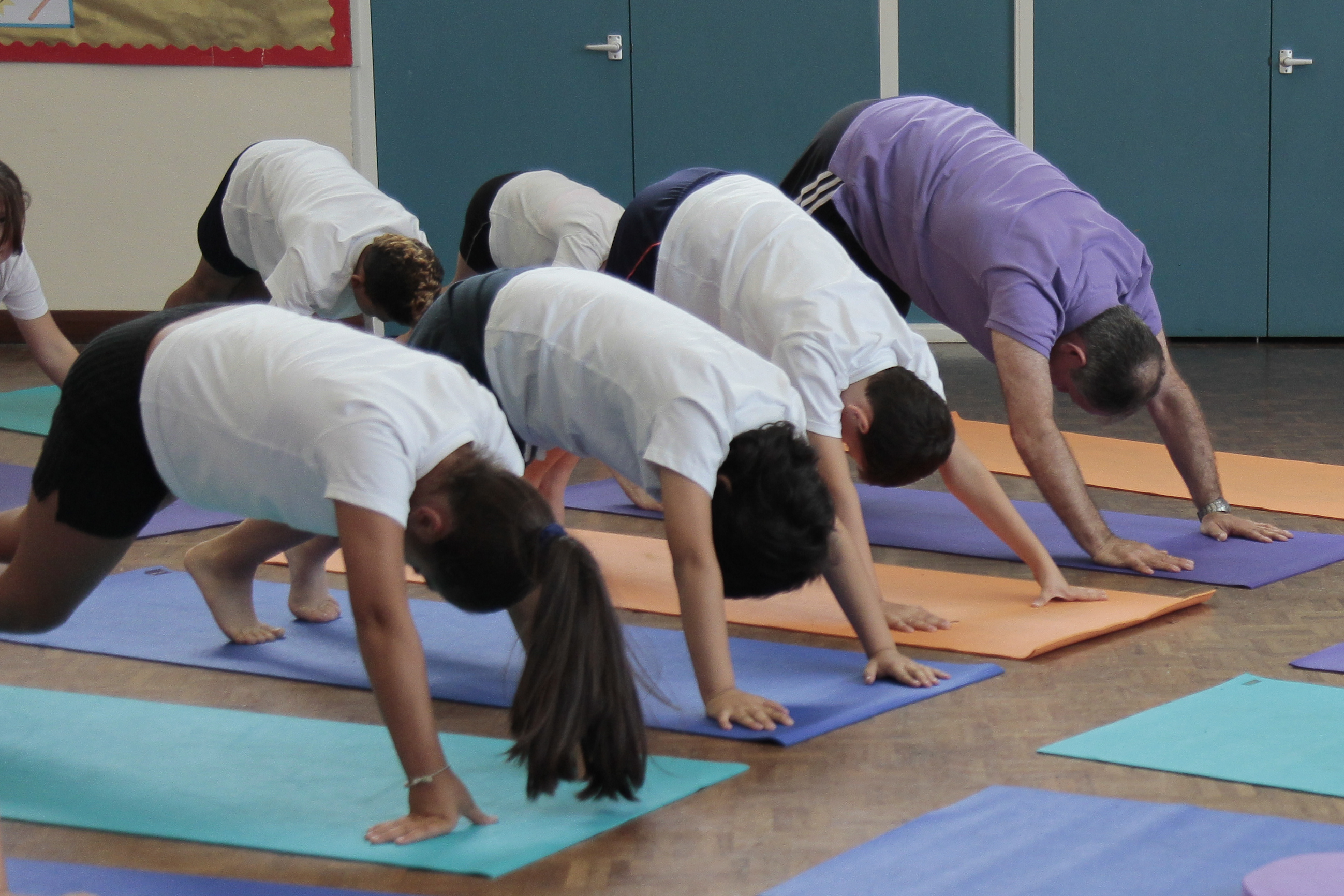
I have found class numbers to be a significant factor in successful group activities. A class of thirty children can be split into five groups of six; or a class of twenty-five into five groups of five. My experience is that there is a dynamic within and between groups with these numbers where learning is more vibrant and meaningful.
After school club numbers vary considerably and are not easy to assess. The samples of class numbers that I have researched place the average at fifteen children. On the surface it would seem easier to teach fifteen rather than thirty, however in my opinion it would be difficult to generate that quality of dynamic that I find in curriculum time.
More likely to welcome and include a range of special needs children?
Class teachers and Teaching assistants are essential. Teachers, teaching assistants and carers are an essential part of my yoga lessons. In primary mainstream schools I normally teach the whole class, which means all children, including those with various special needs, are included.
Special Needs Children
Needs vary and may include children with Autism, Aspergers Syndrome, ADHD and Emotional & Behavioural Problems. Also included are children who may have hearing impairments or severe physical problems. Working closely with staff familiar with each individual child's strengths and limitations allows us to plan and adapt postures and activities so that everybody is included and can enjoy and benefit from the lesson. I firmly believe this inclusively is the very heart of what children's yoga is about.
To give an example, I have been teaching 'Jamie' and his class at a mainstream primary school in Essex for five years. Jamie suffers from spinae bifida, which means that he spends much of the school day in his wheelchair.
However, with the assistance of his two carers 'Jamie' can be hoisted from his wheelchair onto the yoga mat. I adapt the postures and activities so that he is just as involved in the lesson as his classmates, albeit with the help of his carers.
I think it would be highly unlikely that 'Jamie' would be able to attend an after school yoga club. I know of many more examples.
Challenging Behaviour
I teach, and have taught, many children with Autism and emotional and behavioural problems both in primary and special needs schools. Be in no doubt that their behaviour can be challenging and in some situations I would not step into the arena unless the class teacher and experienced teaching assistants were alongside me.
Given the economics and the logistics of running an after school club, I doubt that there will be trained experienced staff backing up the yoga teacher.
A setting where yoga can be best integrated into the curriculum?
The main benefits to linking yoga to the curriculum are that:
Lessons are enrichedConcepts that are difficult to explain are worked out in a kinaesthetic way.Learning is reinforcedChildren benefit from the yoga
By default my teaching approach embraces the core elements of Speaking & Listening, PSHE, Citizenship and Circle Time.
Ideas can be developed as far as your imagination allows; my work with the children has addressed scientific subject matters such as the life cycle of plants ranging onto Yoga-Themed Art and Design Technology projects
Obviously this is a lot easier to accomplish when you are around as part of the school day, and certainly to make this a successful venture it is best if the class teacher is participating in the lesson. Such an approach is highly unlikely in after-school clubs, because:
(a) class teachers rarely come to clubs and
(b) the liaison between club teacher and class teacher is difficult and unlikely to happen, and finally
(c) many after school club yoga teachers do not have an educational background and invariably lack the training needed in linking to the curriculum.
The National Curriculum and PSHE programmes are designed to be taught to specific year groups. The diverse age range at many after school yoga clubs makes it impossible to cater adequately for all the children.
Finally, if you were a child, would you want to be doing more of the same after school? I think not.
Most conducive to children's relaxation?
Relaxation is one of the core elements to the practise of Yoga. Certainly having worked hard the children deserve and enjoy a good relaxation at the end of their lesson.
It is vital for many children who may have a stressful home life, or find difficulty dealing with the educational demands made upon them, or feel the stress of maintaining relationships at school
After-school clubs can go some way to addressing these issues by providing a period of relaxation at the end of a school day, however there are practical problems which greatly affect the quality of the relaxation. Primarily, the children will be grumpy and tired. Teachers are aware of the drop-off in concentration as the afternoon progresses, accompanied by disintegration in behaviour.
By the bell, children are often worn-out, hungry and fractious. It is often the resulting poor behaviour that can spoil the relaxation. We are, after all, expecting the child to lie still and quiet for around five minutes when they may not be in the mood.
By contrast I have found over the years that the children I teach find it easy to relax during the school day and I know from many years of feedback how much they appreciate and enjoy it. Above all, every week I witness the effect it has on them as they return to class calmly going about their business.
There is no doubt in my mind that my relaxations are so successful because the children that I teach know my expectations of their behaviour and they abide by the rules of relaxation. This approach is much easier to achieve as part of the school day.
Conclusion
It still surprises (and thrills) me in my daily teaching, just how much children enjoy and benefit from yoga as part of their school day. Children who are normally excluded from a variety of activities, because of physical or behavioural impediments can be included safely and receive huge physical and emotional gains.
Significantly, I have seen at first hand the real educational benefits that can be brought about by a properly structured and planned integration of yoga with the curriculum.
Complex ideas can be conveyed in an interesting and vibrant manner; children can join in and have fun in a physical activity where physical ability and body shape are immaterial. Best of all I see the pupils well and truly enjoy school!
When I compare this vast range of benefits to those that after-school yoga clubs can offer, (plus the likelihood that the teacher's own training has been inadequate) it clearly and emphatically shows me the direction school yoga should take.
(c) Copyright 2012 Michael Chissick not to be reproduced or distributed without permission


